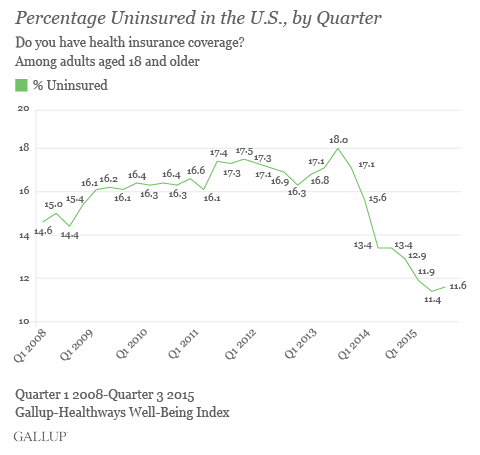As Uninsured Rate Drops, Free And Charitable Clinics Still Needed
In the new Affordable Care Act era, we’ve seen the lowest rates of uninsured Americans in more than 50 years. Yet roughly one in 10 Americans - or 27 million people - still don’t have health insurance.
Recently, the uninsured have become invisible, says Julie Darnell, professor of public health sciences at Loyola University in Chicago. Darnell has spent the past decade studying organizations that provide health care for low-income populations. In many parts of the country, she says, the use of free and charitable clinics has remained steady or even increased, despite the recent drop in uninsured rates.

“We have to recognize that while the Affordable Care Act has been a major accomplishment, that there are still gaps in coverage,” Darnell says. “And insurance doesn't necessarily equate to access to care. Having that insurance card doesn't mean that you can actually receive the care that you need.”
In states where Medicaid is expanding, Darnell says free and charitable clinics struggle with fundraising and recruiting volunteers. “And I believe some of these challenges can be explained by public perception that the problem has disappeared.”
Darnell is conducting an ongoing national survey of free and charitable clinics, which will help researchers and policymakers better understand the current state of the sector. She expects the study will be completed later this year.

